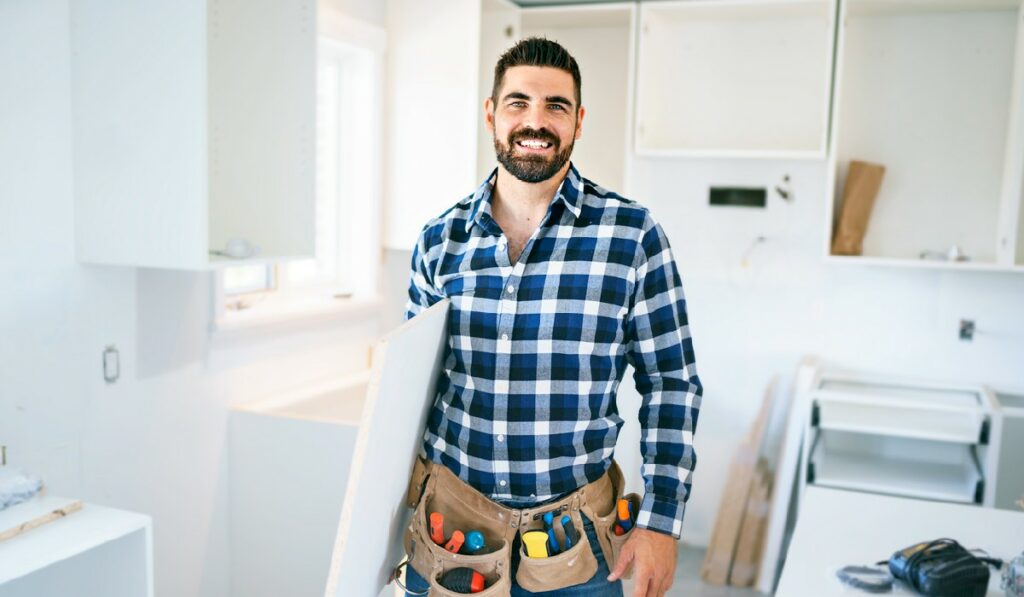From Install to Paint Here’s How to DIY Your Kitchen Cabinets

If you’re looking for a cost-effective way to give your kitchen a makeover, consider doing it yourself! While this may sound daunting, DIYing your kitchen cabinets is a relatively straightforward project that can be completed in just a weekend. In this post, we’ll provide step-by-step instructions on how to DIY your kitchen cabinets, from installation to custom painting.
We’ll provide advice on choosing the right cabinets, tips for cabinet installation, and step-by-step painting techniques. We’ll even offer a few design ideas to help you get the most out of this project. So, if you’re ready to give your kitchen a much-needed facelift, it’s time to grab your tools and get started!
Preparing for the Job
Before you begin, be sure to measure your kitchen walls carefully and then create a layout of where you would like your cabinets to go. Gather all the necessary supplies and tools, including screws, a leveler, screwdriver, saws (circular, miter, and a sliding miter saw if needed), caulking gun and caulk, clamps, plywood, adhesive remover, protective gear (gloves and goggles), sandpaper, paintbrush or roller, paint primer, and paint.
Removing the Old Cabinets
Start by uninstalling the old cabinets carefully since you’ll likely need to re-use the shelves in your new cabinets. Detach them from the wall using a power screwdriver or drill. De-install the cabinet doors and remove the knobs or handles. Ensure all components are in labeled bags or boxes for easy access during installation.
Installing the New Cabinets
Starting with the bottom cabinets first, try to place them at least 18 inches above your countertop if possible. Ensure that all sides of your cabinet are flush against the wall or other connecting cabinetry structures with a leveler tool. Once all adjustments have been made, use wood screws to attach them to the walls with caution; make sure not to over-tighten by using too much force. For additional support use, clamps to attach plywood on the backside of your cabinets. Place styrofoam bumpers on all corner edges of doorless cabinets for extra protection when closing drawers or opening doors. If a sliding miter saw is needed, cut holes into cabinetry structures for any plumbing fixtures ahead of time before installation continues.
Finishing Touches
Once all cabinets have been successfully installed fill any existing gaps with caulk using a caulking gun for additional support and dust prevention. Using an adhesive remover, gently remove any remaining residue from old cabinetry if present and wipe away with wet cloths before sanding down any rough edges or corners of your new cabinetry structure with sandpaper; remember to wear protective gear while doing this as debris will fly into the air while sanding down edges. Replace any missing components connected to doors (such as knobs/handles) after sanding is complete.
Painting the Cabinets
Paint requires some extra time but can really give an edge to your installation job, so take extra care during this step. Clean off any debris on the outside surface of each cabinet before applying paint primer onto each panel with either a paintbrush or roller; let it sit overnight before applying another coat of primer if necessary (when painting dark wood). Paint two coats of your desired color onto each cabinet with clean strokes and let dry overnight before replacing any components attached (knobs/handles). Your kitchen cabinetry should now be complete!
Conclusion
Congratulations! Now that your cabinetry work is complete consider exploring other kitchen makeover options. You could replace the countertops with granite or quartz. Or maybe you can install an island for extra counter space. Whatever you choose, you can feel proud of the time and effort you’ve put into making your kitchen look amazing. So, grab your measuring tape, and get to work on your DIY kitchen cabinetry project today!
